Part Three: How to Start Skiing Powder
In the third part of the series, Marek Meluzin from Freedom Snowsports will teach us how to start skiing powder.
For most skiers, powder skiing is the holy grail. But with powder days fewer and further between, the opportunity to ski the soft stuff is not always available (unless you’re willing to hike for it). So, if trying out your first powder turn seems daunting, why not get prepared? Being ready for when the snow hits and knowing how to get started can make the difference between a day of head plants or a day of high fives (mind you, we’d say both are good fun!).
It should also go without saying that if you’re skiing outside of the patrolled ski area, you need to be equipped with the essential avalanche safety gear, including a transceiver and a backpack with a shovel and probe. Most importantly, you should know how to use them and/or hire a professional guide.
So, let’s get started…
Choose the Right Gear
Your choice of gear can make your powder skiing experience a joy or a battle. Try to avoid clinging to what you know for the piste, and instead use skis with at least 90mm width underfoot at an appropriate length—at least as long as you are tall. This will give you more stability and balance, and with the skis floating a little higher up in the snow, your turns will be easier to manage, less tiring, and a whole lot more fun.
How to Balance in Powder Snow
One common myth is that you need to lean back when skiing in powder—don’t! Instead, maintain a dynamic balance, the same way you would on a groomed slope. Just remember that your ski tips want to sit slightly upward in the snow, so allow them to by balancing over the whole flat area of your feet and letting your ankles flex a little more. Top Tip: try lifting your toes up inside your boots.
The Need for Speed
Now find some fresh snow at the edge of the piste where you can ski straight down or across at a moderate (but comfortable) speed. Speed is your friend here—it helps provide the skis with some lift and helps them glide over the snow instead of through it. Think of a speedboat chugging along at walking pace with its nose in the air pushing through the water, compared with full speed skimming over the surface—the latter is a lot more agile and quick to turn.
When you ski your straight line, focus on keeping your feet closer together using a narrow stance with your balance equal over both feet. Then, when your skis pick up some momentum, try creating a smooth bouncing motion with your legs (again balanced equally over both feet), like you’re on a trampoline. Or imagine skiing over virtual bumps: flex and extend your legs to press and absorb the terrain without your upper body moving up and down. Think of your center of mass (COM) as stable, with soft legs moving toward and away from it.
This bouncing motion will help the skis track through the deep snow, then return to the surface where it will be easier for you to make them change direction (more on that shortly). Make sure you carry enough speed in a straight line first to really feel this working and practice keeping your balance over both feet equally.
Go With the Flow
Once you’ve nailed the bouncing with solid balance, it’s time to start developing the ability to turn. Begin with small, shallow, easy turns staying close to the fall line, so choose a gradient that is comfortable for you.
The first rule of powder club is: no sudden movements. In soft snow, you won’t be able to flick your skis across the hill, skid to stop, or make quick snatchy turns to stop. If you try, you’ll most likely face plant. You have to go with the flow and keep your movements smooth and patient. If you want to stop, you need to use a series of smooth, rounded curves. Top Tip: Think of your line as a shallow ‘S’ shape instead of a curvy ‘C’ shape.
Begin in the same way as the previous step:
- Start out straight running and build up the movements in the legs to create that bouncing motion.
- Keep your body facing down the hill.
- Now timing is key. When you feel the skis go light above the snow, gently turn both feet in the direction you want to turn, and as you press back into the snow (always keeping your balance equal over both feet with stance slightly narrowed), allow your skis to steer.
- Release the skis into the fall line, and as they go light again, repeat the process in the next direction.
Once you build up consistency performing these steps to link basic turns in gentle powder fields, it’s time to venture to the next stage. There’s a whole world of off-piste skiing to unlock by learning how to control different speeds, turn shapes, steeper gradients, and varied snow conditions. All it takes is a little practice (and a lot of luck with the weather gods!).
Instructor Bio
Marek is an instructor at British-owned Freedom Snowsports Ski & Snowboard School. He is also an instructor trainer and examiner for the Czech (APUL) Snowsports Association. Freedom Snowsports has locations in Méribel, Chamonix, Saint Gervais, and the Grand Massif, and runs courses for all levels, from beginners to pro training camps. If you’ve ever wanted to develop your skiing skills, these guys are the go-to experts. Find out more at Freedom Snowsports.

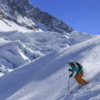
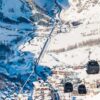
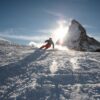
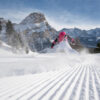
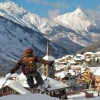
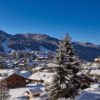
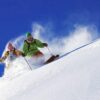
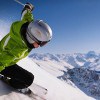
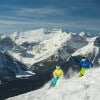







Add Comment